A comprehensive macaron troubleshooting guide with photos, possible causes and how to avoid the most common macaron issues!
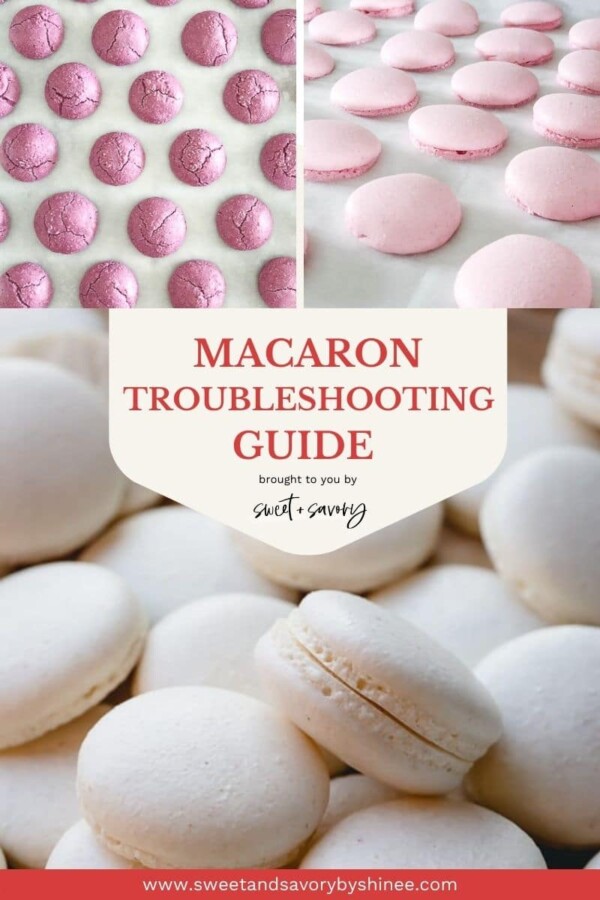
Table of Contents
Since 2012, I’ve made thousands of macarons in my home kitchen with many trials and errors, as well as picture-perfect macarons! And yes, I’ve had pretty much every problem imaginable!!
In the process, I’ve gained lots of tips and tricks to solve those frustrating issues and, most importantly, how to avoid them in the first place.
Remember, sometimes, macarons fail for no apparent reason and leave us scratching our heads.
But I encourage you to never give up on macarons. The joy of watching your macarons grow those ruffled feet and pulling out perfectly round macarons with shiny smooth tops is simply priceless.
I swear, every single time, when I see my macarons through the oven door puffing up and baking perfectly, I can’t help but do a little happy dance in my kitchen! Pure joy, I’m telling ya!
What’s a perfect macaron?
Perfect macaron is very subjective. To me, a perfect macaron has the following characteristics:
- Smooth shells
- Ruffles feet
- Full inside
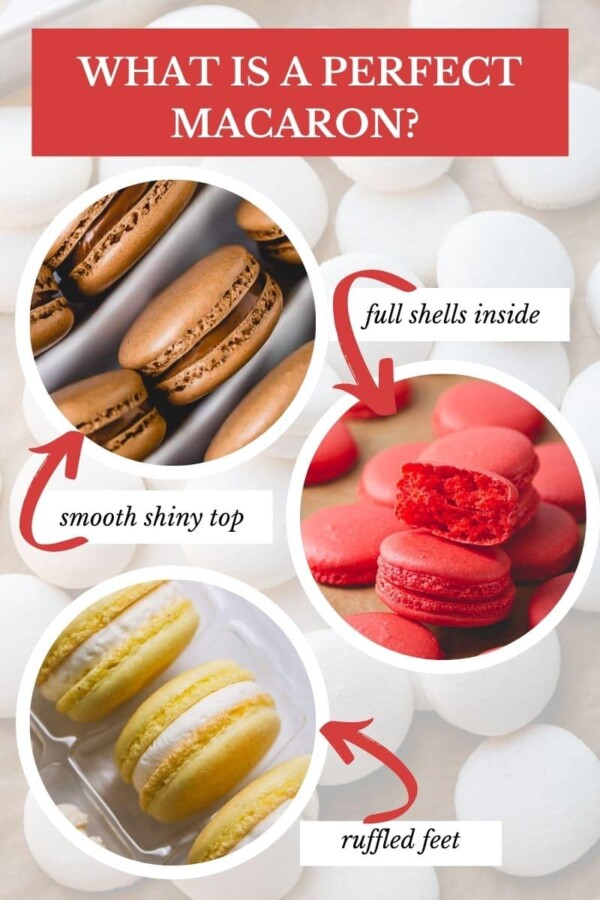
Macaron Troubleshooting Video
Visual Macaron Troubleshooting Guide
Ok, let’s discuss each of the most common macaron issues, their causes and how to fix or prevent them!
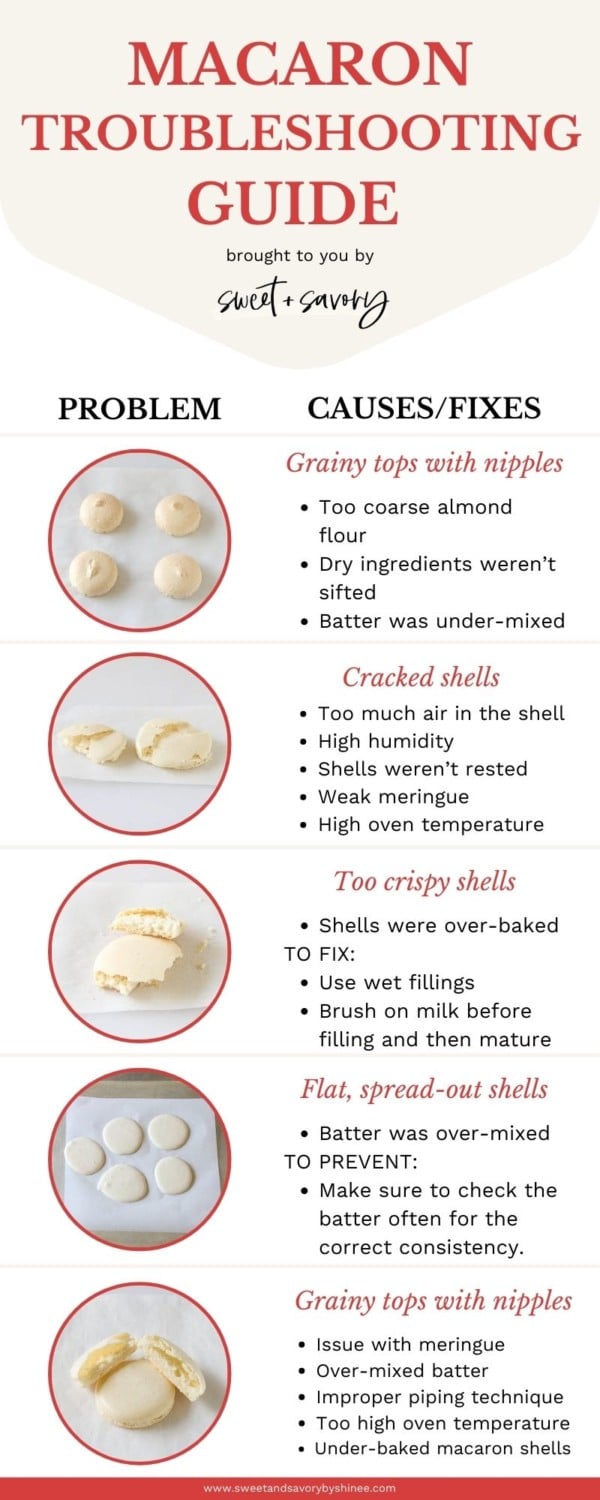
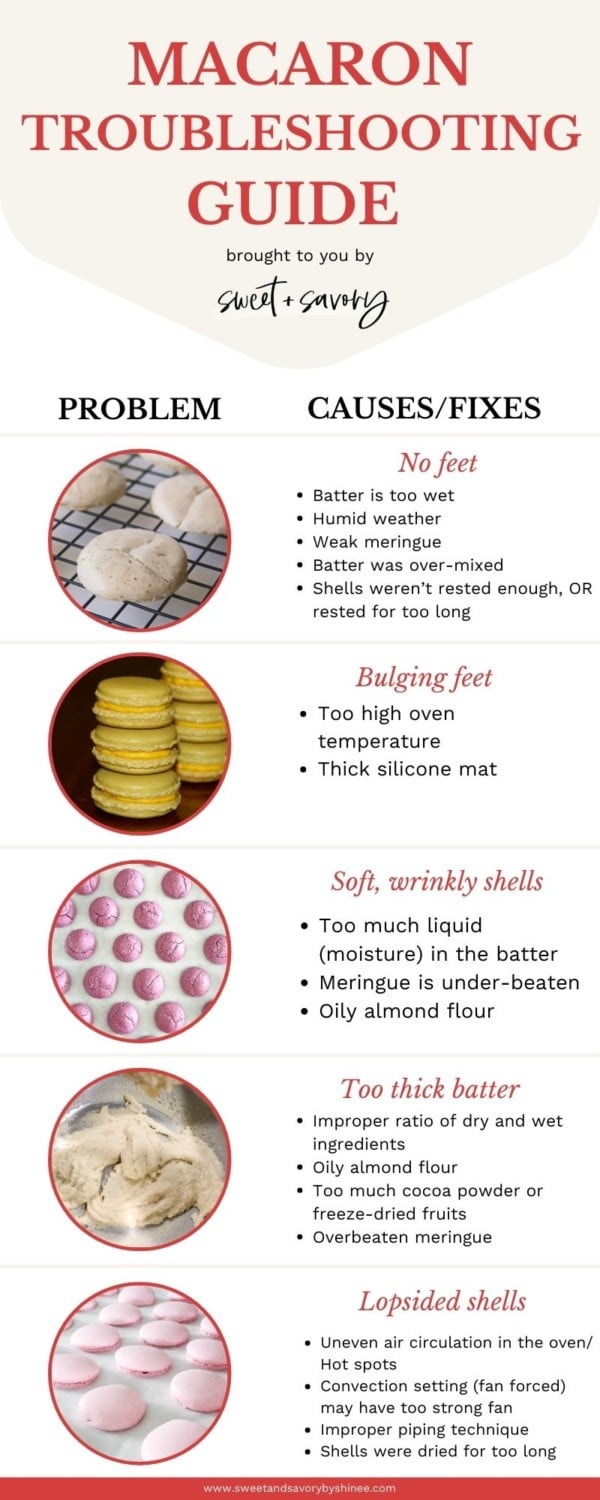
Pin this now to find it later
Pin ItUneven, grainy macarons with nipples
Possible causes:
- Too coarse almond flour
- Dry ingredients weren’t sifted
- Batter was under-mixed
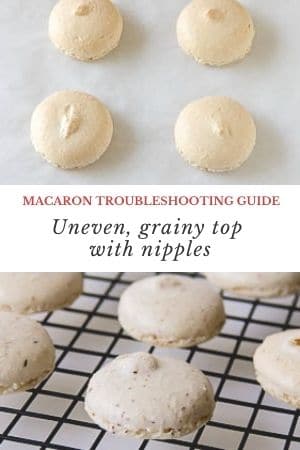
how to fix grainy shells with nipples:
- Make sure to use fine ground almond flour.
- Don’t skip sifting the dry ingredients! Toss large almond pieces left in the sifter. You shouldn’t have more than 1/2 tablespoon of almond bits.
- Under-mixed batter also causes grainy shells with nipples. When mixed right, the nipples should melt back into the batter after tapping the piped shells on the counter.
don’t do this!
Never use wet fingers to push the nipples down. Instead, use a toothpick to encourage the batter even out.
Cracked shells
Possible causes:
- Too much air in the shell
- High humidity
- Shells weren’t rested
- Weak meringue
- High oven temperature, or hot spots in the oven
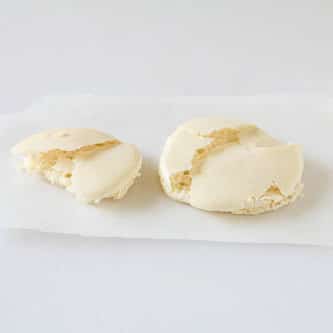
HOW TO FIX cracked macarons:
- Be sure to tap the baking sheet right after piping macaron shells. And use a toothpick to pop large air pockets visible on the surface.
- When it’s too humid, the shells don’t develop good skin, which leads to the next point.
- When the shells haven’t rested long enough to develop skin on top, steam releases from anywhere cause macarons to crack on top.
- Take your time to make nice and sturdy meringue, especially when you’re making French meringue. Watch my video on French Meringue 101 to learn all the tips to make the most stable French meringue.
- Too hot oven can also cause cracks in macaron shells. Make sure to get an oven thermometer to double check the temperature inside the oven without relying on what oven says.
Erupted shells
Possible cause:
- Touched the shells with wet finger to push down a pointy nipple
How to prevent erupted volcano macarons:
Never touch your unbaked macaron shells with wet fingers to push down pointy end. Instead tap the baking sheet well. And if the pointy end doesn’t melt into the batter, you can either baking them as is, or scrape the batter back into a bowl and mix for a little more until the batter is at correct consistency.
Too crispy interior
Possible cause:
- Shells were over-baked
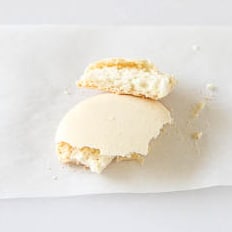
How to fix too crispy shells:
If you over-baked your macaron shells and now they’re super crispy throughout, don’t fret! 2 easy fixes:
- Use wet fillings, like jams, caramel sauce, or lemon curd in the center.
- Simply brush on milk on the bottom of the shells before piping a filling of choice.
Tip
Mature filled macarons for 24 hours. The shells will absorb the moisture from filling and macarons should soften nicely.
Flat shells, spread out too much
Possible cause:
- Batter was over-mixed
Over-mixed batter is too loose and the shells don’t hold its shape well, instead it spreads out too much.

How to prevent flat, spread out macarons:
Once macaron batter is over-mixed and it’s too runny, there’s no way to salvage it. So it’s important to prevent this from happening.
Make sure to check the batter often for the correct consistency. It should slowly run off the spatula into a ribbon, and the edges should melt back into the batter within about 10 seconds.
Hollow shells
Possible cause:
- Issue with meringue
- Over-mixed batter
- Improper piping technique
- Too high oven temperature
- Under-baked macaron shells
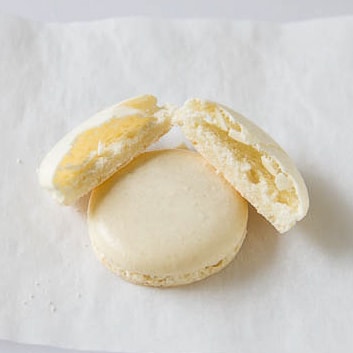
How to fix hollow macaron shells:
Hollow macarons are so common, and I personally battled with this issue for a long time. Now, I consistently get full, meaty macarons straight from the oven.
Since it’s a complex issue, I dedicated a separate post on how to fix hollow macarons.
No feet
Potential causes:
- Batter is too wet
- Humid weather
- Weak meringue
- Batter was over-mixed
- Shells weren’t rested before baking
- Shells were rested for too long, weakening the meringue structure
- Too low oven temperature
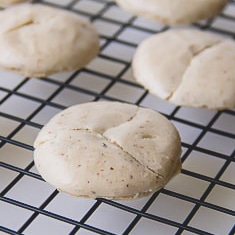
How to prevent no feet macarons:
- When the batter is too wet, macarons don’t develop those ruffled feet. The most common causes for wet batter: excess liquids, like extracts, lemon/lime juice, liquid food coloring, too much gel food coloring, etc.
- In some cases, especially in humid climates, aging egg whites might be beneficial. During aging, egg whites loose some of its moisture.
- When the meringue isn’t whipped to stiff peaks, it doesn’t have strong enough structure to lift macarons. Watch my French Meringue 101 video for visual cues for proper meringue.
- When macaron batter is over-mixed, there’s not much air bubbles left to give the shells lift during baking. Therefore, they come out flat without feet.
- Also, if macarons weren’t rested to form a skin before baking, it could cause no feet macarons. And if the shells were rested for too long, it can also negatively affect the batter, because meringue loses its stability when sat for too long. Keep checking the shells every 15 minutes and put them in the oven as soon as they don’t stick to your fingers.
- If the oven is not hot enough, macarons won’t rise as air bubbles in the meringue need heat to expand to lift the shells, creating that pretty feet at the base.
Tip
Make sure to get an oven thermometer to double check the temperature inside the oven without relying on what oven says.
Bulging feet
Potential causes:
- Too high oven temperature
- Silicone mat
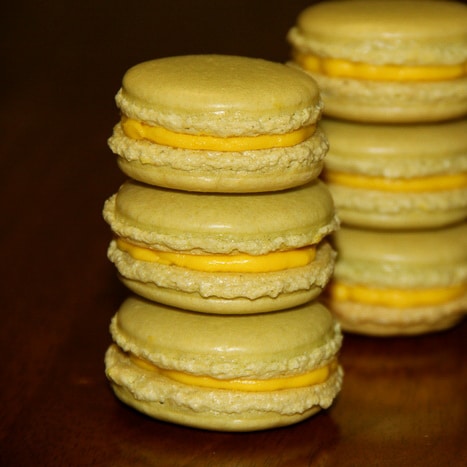
how to prevent bulging feet:
Some may find it ugly when the ruffled feet extends out of the macaron shells. I’m not a huge fan, but it’s not the worst!
- This happens when the oven is a bit too hot, causing the macarons to rise too high and then collapse slightly, making the feet bulge out.
- And another reason is silicone mat might be the culprit. I certainly happens to me with thick silicone mats, but I know some people have gorgeous macarons with silicone mats.
Soft, wrinkly shells
Possible causes:
- Too much liquid (moisture) in the batter
- Meringue is under-beaten
- Oily almond flour
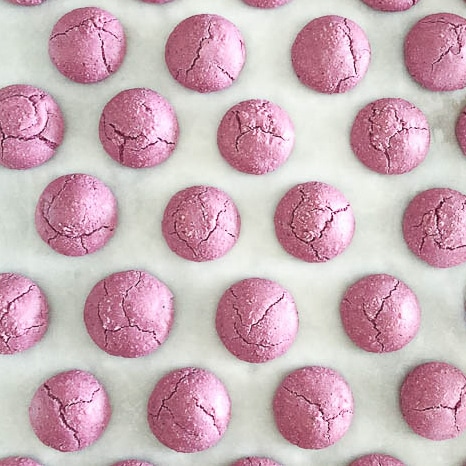
How to prevent soft, wrinkly shells:
Excess moisture and/or fat is the #1 cause for soft, wrinkly shells. And there’re number of culprits for excess moisture/fat in the batter:
- Adding liquid extracts, juices or liquid food coloring
- Adding cocoa powder, freeze-dried fruits, etc.
- Under-mixed meringue also contains too much moisture
- Oily almond flour, or almond flour that has been opened for too long
Cocoa powder contains fat which could potentially cause soft, brownie-like macaron shells. And freeze-dried fruits absorb moisture from the air fast and could cause soft, wrinkly shells as well.
Tip
Store opened almond flour in an airtight container in a cool place.
Too Thick batter
Typically, when you add dry ingredients into meringue, it starts out pretty thick and that’s totally normal. As you fold the batter, it thins out and gets runnier.
In rare occasions, the batter never loosens and it stays thick.
Possible causes:
- Improper ratio of dry and wet ingredients
- Oily almond flour
- Too much cocoa powder or freeze-dried fruits
- Overbeaten meringue

how to fix and prevent thick batter issue:
- Be sure to weigh the ingredients carefully. I strongly recommend weighing all the ingredients, including egg whites, with a kitchen scale.
- Oily almond flour could cause thick batter. Make sure to use fresh almond flour and avoid processing it in a food processor.
- Too much cocoa powder or freeze-dried fruits can throw the ratio of dry and wet ingredients.
- When meringue is over-beaten, it gets dry, throwing off the ratio as well.
Blotchy shells
I don’t have a photo of this issue, but basically it looks like greasy stains on the shells.
Possible causes:
- Oily almond flour
- Batter sat out for too long before piping
how to prevent blotchy macarons:
- Use fresh almond flour that’s not oily. To test, squeeze some almond flour in your hand and see if it holds its shape. If it holds its shape like wet sand, then it’s too oily.
- Make sure to pipe the shells right away, especially with French meringue batter.
Lopsided shells
Possible causes:
- Uneven air circulation in the oven/ Hot spots
- Convection setting (fan forced) may have too strong fan
- Improper piping technique
- Shells were dried for too long

how to prevent lopsided macarons:
Main culprit for lopsided shells is poor air circulation. This could be due to uneven heat distribution and hot spots in the oven, convection settings with too strong fan. Here’re a few things you can do in this case:
- Flip the baking sheet upside down before piping macarons, so that there’s no edges around the sheet to block any heat circulation.
- Bake macarons one sheet at a time.
- Turn the baking sheet around half way through baking.
- If possible, bake on conventional setting, heat coming from top and bottom.
The next reason for lopsided macarons is improper piping technique. Pay close attention to following:
- Hold the piping bag with macaron batter straight at 90° and squeeze the batter from the top to one spot until the desired size reaches. Watch my macaron video for better illustration.
- Pipe the shells at least half an inch apart to give the shells enough room for air circulation.
And lastly, don’t dry your macarons for too long. Too thick skin may cause lopsided macarons.
Concaved (Inverted) shells or Stuck To Parchment
Possible causes:
- Low oven temp/ low heat from bottom
- Under-baked shells
- Not cooling the macarons before removing from parchment paper
How to prevent concaved, or stuck macarons:
- Make sure your oven is hot enough. Most of the time, ovens need good 30-45 minutes to preheat properly. Even if it beeps when it’s preheated, I highly recommend double checking with an oven thermometer.
- Be sure to check the macarons for doneness before taking them out. To test for doneness, gently touch the top of one macaron with your index finger and try wiggle it. If it wobbles side to side, they’re not ready. keep baking for another minute or so. The cooked shells should wiggle ever so slightly and firm to touch. When in doubt, cook a bit longer. In my opinion, it’s better to over-bake them than under-bake them.
- Make sure to cool the macarons on the baking sheet for at least 10 minutes before removing from parchment paper/silicone mat.

Whew, are you still with me? Thank you!!! I hope this macaron troubleshooting guide answers your questions and helps you to perfect your macaron skills.
And if there is anything I haven’t covered, please leave me a comment below. I’d like us, macaron-lovers, connect and discuss various problems we face baking macarons. Let’s get the discussion started.
More Favorites from Sweet & Savory
This post was originally published on December 21st, 2015, and last updated on February 16th, 2021.
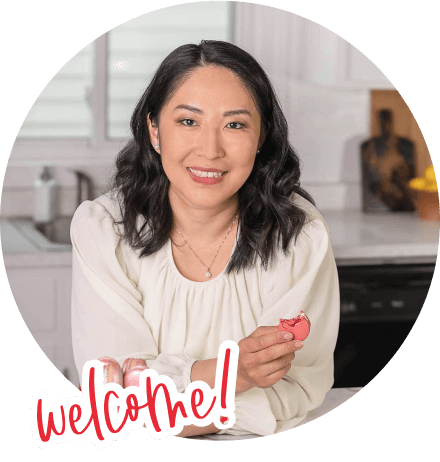





How do you know when to stop mixing so that it is not over mixed?
Hi, Elle. I advise to check on the progress frequently.
Howdy I looked through your other comments and have seen that your answer for hollow Macarons is over beaten eggs whites. I’ve tried to not over beat them. And I’ve definitely tried not not over mix the next step but the mixture seems to get runny really quick. I’ve tried different recipes, including one of yours, so I couldn’t say what ingredients I’m lacking. I can’t get feet and my mix is over mixed too quickly. Thanks for the help!
Hi, Sindi. It’s hard to say, if you have a photo of your macarons, e-mail it to me. It helps to see it. Also if the macaron batter is getting too runny too quickly, maybe the meringue (egg whites) didn’t quite reach the hard peaks. I suggest maybe whip a tad longer when you think it’s done?
Hi! I have made about 7 batches of your recipe for Basic Macarons and so far only one has turned out successful. But it was so great when it did! Today I thought I was fixing my previous problem (not whipping the meringue enough), but I came up short again. I live in Texas where it’s very humid (75% when I made them this morning), so I thought of increasing the temp time/decreasing bake time. The batter did seem a bit stiff as I left out vanilla extract, but it piped well and just took a little extra time with the batter folding. I baked them at 325 for 12 minutes. When I went to check them, they had beautiful feet (my best feet yet), but the tops were wrinkly and sort of caved in. Starting to crack in some places. I am so frustrated! Help!
Hi, Anna. Looks like you’re in love with baking french macarons, just like I am. The wrinkly soft top is usually indication of too much moisture, and it may have been due to humidity. Can you confirm the shells were soft? Or they were hard but cracked?
Thanks for replying! Yes, they were very soft.
I’ve been trying to make french macs over 3 weeks and used more than 10 lb of Almond flours but I am still getting hollow shells! It’s driving me crazy now but I won’t give up… I’ve tried different meringue stiffness, different almond flour brands, different oven temps, and etc. Any advice you could give me?
Hi, Jay! So glad you’re not giving up. 🙂 The hollow issue usually caused by the over-mixed meringue. Are you using a stand mixer? I’ll pay close attention to the meringue and be careful not to overwhip it. I’m planning to write a detailed post on meringue soon. Stay tuned.
Thanks for posting all of this fantastic info. I made macaroons for the first time today and they came out nearly perfect.
Yay, so happy to hear your macaron success, Robert! Thanks for your feedback!
hi!!!! a few weeks ago i set out to make these. i’m not new to baking and i did some research ahead of time so i went into it thinking i would succeed. but i didn’t. it took me 4 tries to get it right. but when i did they were perfect. i’ve been o sealed since. butttt for some reason yesterday, during baking they had perfect fluffy feet. but towards the end of baking and upon taking them out the feet were barely noticeable. today, i baked again, same thing. no clue what i’m doing wrong!? i did use a different mixer, although both kitchen aids, and different parchment paper. but i don’t see how that would matter?
Hi, Nicole. It sounds like the macarons may have collapsed once they came out of oven? Have you tried baking them a minute or two longer? I don’t think mixer will make a difference, unless they have different speed settings. Are parchment papers different thickness?
Hello! This space Is Wonderful! Glad i found this pin. What happens if I live on a very humid place? How shall i control humidity when living the macarons rest before baking? Any idea? Shall I incorporate corn starch? If so…at which moment and how much?
Hi, Monica. So glad you bumped onto my site. I’ve never made macarons with cornstarch, so I have no advice on that. But in humid climate, you could use a fan to dry your macarons.
Hello, how will we make the almond flour? Do we need to add a little bit of all purpose/ self-raising folur in the almond ? Thank
I have make in as per a receipt on YouTube, but I have forget to add food coloring and before adding the mixture I have added the food coloring and when I put the batter on my silicone mould, I think it was over mixed 😖😞😭
Hi, Wasiimah. I’ve never tried making almond flour myself, I always use store-bought. But I don’t think you need to add any flour, just carefully pulse the almonds in a food processor until fine. And bummer on the over-mixed batter, hope next time you’ll make it perfect!
Hi, I was going through ur tips after I baked vegan macaroons. I had the problem of hollow macaroons. Can u pls suggest what can go wrong other then over beating and temperature as they are vegan. I used aquafaba and also cream of tartar
Hi, Ila! I have no experience with vegan macarons, as I’ve never tried making it with aquafaba. So I can’t give you proper advice. But generally, hollow macarons are caused by over-beaten meringue, so I’d watch carefully when beating aquafaba.
Hi . Why I my macarons burn on the underneath
Hi, Rukz. Thanks for reaching out. There could be number of reasons, would you mind give me a bit more details? What kind of baking sheet are you using? Do you have an oven thermometer to double check the temperature of the oven? And any chance you can try baking them a few minutes less?
I am using a sillicone matt n i dont have a thermometer
Ok, I suspect your oven may run hotter than you set it to. I recommend getting an oven thermometer to check the accuracy. But if you don’t want to get an oven thermometer, reduce the oven temp by 10-15 degrees and see if that helps.
You may also want to move your oven rack to the middle if it’s near the bottom of your oven.
Great point, Caroline! Thank you.
Hi, After many attempts at making the perfect macaron I’m still coming up empty handed. My shells don’t develop a nice pillow top. I mix my meringue my meringue until there is a stiff peak, but I’m not quite sure that I reach lava consistency with the macronage stage. It looks like a slow drip instead of a lava flow. What are your recommendations? Determined to conquer this finicky French pastry!
Hi, Diane. Kuddos to you for keep trying! 🙂 I need a bit more info in order to try to help you with your issues. Would you mind sharing what recipes you’ve tried? And do you weigh your egg whites, and other dry ingredients, or do you use cups to measure? It sounds like your macaron batter is a bit on a thick side. Also how your macarons look like exactly? Any specifics would be helpful.